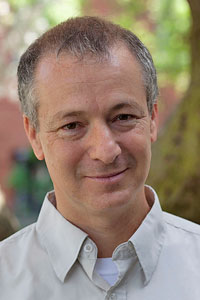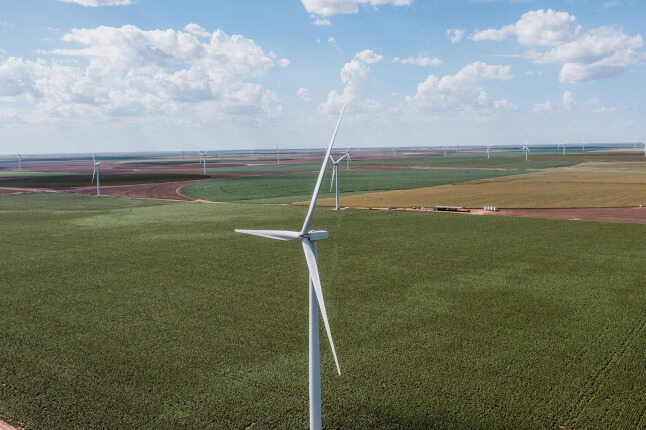News
Restoration of Eocene fauna of North America, on a mural made for the Smithsonian Museum by Jay Matternes. (Wikimedia Commons)
Fifty million years ago, the Cowboy State was crawling with crocodiles. Fossil records show that crocs lounged in the shade of palm trees from southwestern Wyoming to southern Canada during the Cretaceous and Eocene. Exactly how the middle of the North American continent — far from the warming effects of the ocean — stayed so temperate even in winter months has long eluded scientists.
In recent decades, researchers have observed those same high-latitude regions in North America and Asia warming much faster than the rest of the world.
New work by researchers at Harvard John A. Paulson School of Engineering and Applied Science (SEAS) and the Department of Earth and Planetary Sciences suggests that increased amount of low clouds in the Arctic, due to rising Arctic temperatures, could amplify winter warming in high-latitude regions. This mechanism offers a possible explanation to both past and future continental warming in winter.
Timothy Cronin, a NOAA Climate and Global Change postdoctoral fellow with the Harvard University Center for the Environment (HUCE), and Eli Tziperman, the Pamela and Vasco McCoy, Jr. Professor of Oceanography and Applied Physics at SEAS and Department of Earth and Planetary Sciences, described the model recently in the Proceedings of the National Academy of Science (PNAS).
Most people who live in Canada and the northern United States are intimately familiar with the biting cold of Arctic air. These frigid air masses form as cool but temperate air from high-latitude oceans moves over the sunless Arctic in winter months. The air masses radiate heat to space, cool strongly at the ice and snow-covered surface, and then often move south, leaving bitter cold in their wake.
Cronin and Tziperman asked the simple question: Would these Arctic air masses form more or less rapidly if the high-latitude oceans over which they begin their continental journey were much warmer? In the present day, the initial ocean surface temperature is near freezing — 0 degrees Celsius. Using a simplified model of a single air column, Cronin and Tziperman raised the initial ocean surface temperature to 20 degrees Celsius, mimicking the temperature during the Eocene and Cretaceous periods. In their simulation, when this air column moved over the Arctic and cooled, a thick layer of low clouds and fog formed. The clouds acted as insulators, significantly slowing the cooling process.
At the end of the simulation, the surface air temperature was 40 degrees higher, despite the initial increase of only 20 degrees.

This panel shows the change in surface air temperature between a historical period from 1980-1999 to future projections from 2080-2099.
“High-latitude clouds have a strong heating effect at the surface,” said Cronin. “We’ve all seen how a cloudy night cools off slower than a clear night. The same process is in effect here. Increased low cloud cover with warming would slow the formation of Arctic air. If the Pacific Ocean were very warm, low clouds could help these air masses to make it all the way across North America without ever dropping below freezing at the surface.”
This insulating effect could suppress the formation of frigid Arctic air altogether, said Cronin, which may explain the crocodiles in Wyoming. The reduced surface cooling rates at high latitudes would also explain fewer and less severe extreme cold events at mid-latitudes, which has been observed recently — notwithstanding Boston’s recent winter.
Because the single-column model is relatively simple and fast to run, the team was able to simulate a broad range of initial ocean temperatures and use several different model assumptions about how clouds form. Their overall finding – that increasing low cloud amount with warming slows the formation of Arctic air – held up across the range of temperatures and cloud model assumptions.

The percent changes in the vertical integral of cloud liquid, which more than doubles over some high-latitude regions between the historical period of 1980-1999 to future projections from 2080-2099.
The next steps of the research are to explore more complex models of this system.
“If we take into account factors related to climate change, such as reduced winter sea ice and snow cover, we may find ever stronger suppression of Artic air formation in the future,” said Cronin.
The research was supported by National Oceanic and Atmospheric Administration Climate and Global Change Postdoctoral Fellowship, the Harvard University Center for the Environment and by the National Science Foundation.
Topics: Environment, Climate
Cutting-edge science delivered direct to your inbox.
Join the Harvard SEAS mailing list.
Scientist Profiles
Eli Tziperman
Pamela and Vasco McCoy, Jr. Professor of Oceanography and Applied Physics
Press Contact
Leah Burrows | 617-496-1351 | lburrows@seas.harvard.edu




